Touring Mumbai – Saturday
Scribbled down on February 12th, 2007 by she
Posted in Where No Flan Has Gone Before
I know this post is a week late, but I had to wait until I had some free time and reliable access to the Internet to post pictures.
We started the morning with grand plans that evaporated in the reality of the number of hours you can do and see things in a single day. We left the hotel at 11am in search of a way to the Gateway of India. After negotiating with a taxi driver for the day’s rates, we hopped in a car and started on our merry way.
At the end of the road our hotel was situated on, we saw the following mess:
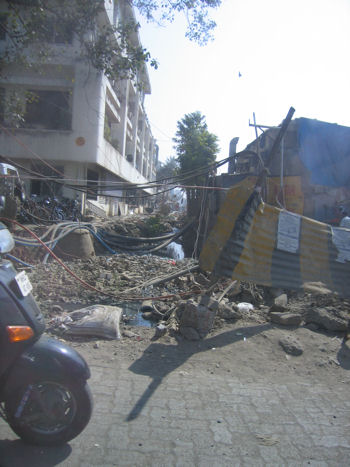
On the way to the Gateway of India, our driver stopped at Mahalaxmi ghat, the central location for all dobi-wallah’s. This is where most laundry is washed and visiting is a near surreal experience. You can watch the people at work, pounding clothes against the cement and then hanging them to dry.
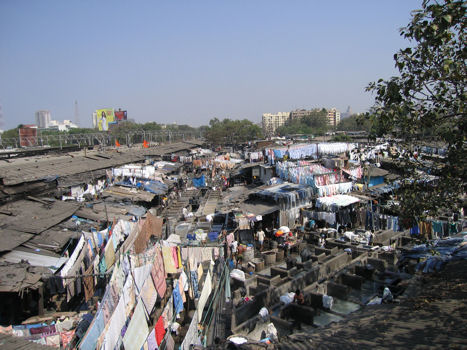
Tour buses stop to allow their passengers a chance to view the chaos and wander amongst the dobi-wallah’s at work.
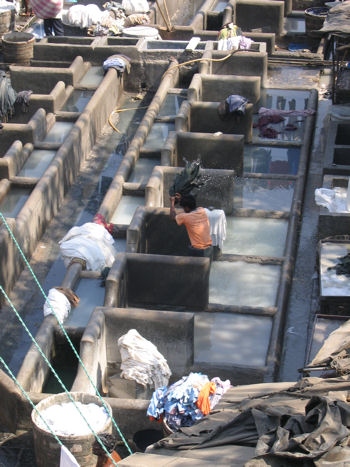
Just about any driver in India will attempt to bring you shopping in order to gain commissions from the stores. Since I know exactly where I wanted to do my shopping – and with whom – I’ve been very adamant that I won’t go into a shop a driver attempts to take me to. Aside from taking up way too much time, I dislike the pressured sales techniques. We’re very upfront with the drivers – informing them that we’ll tip them if they don’t take us to a shop and won’t tip them if they try – but still each driver makes at least one attempt. For a culture that has difficulty saying no, they certainly have no difficulty ignoring the word when I use it…
And so, on our way to the Gateway of India, our driver stopped outside a shop and tried to get us to go into it and buy a few things. After flat out refusing to do so, he finally took the hint and drove the rest of the way to our destination.
The Gateway of India was built to commemorate the visit of King George V and Queen Mary to Bombay, prior to the Darbar in Delhi in December 1911. It’s a popular tourist destination not only due to it’s historical significance but also because all boats leaving for Elephanta Island (a World Heritage site) leave from the docs behind it.
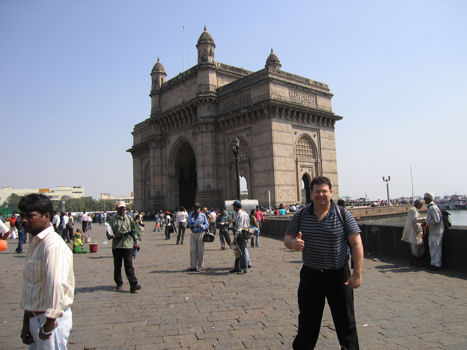
The last British troops to leave India, the First Battalion of the Somerset Light Infantry, passed through the gate in a ceremony on February 28, 1948.
According to Ted’s Rough Guide book, the Taj Mahal Hotel was built in 1903 by the Parsi industrialist JN Tata, supposedly after he was refused entry to one of the city’s European hotels because he was “a native”.
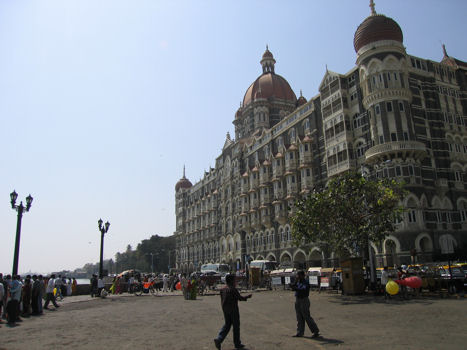
Our new friend, Amresh, tells us that in those days, it wasn’t uncommon to see signs posted in European establishments indicating that “dogs and Indians are not allowed on the premises.”
It was already past 2 in the afternoon when we left the Gateway area and trekked to the Chhtrapati Shivaji Maharaj Vastu Sanghalaya (formerly the Prince of Wales museum). The walk from the Gateway to the museum was an adventure all on it’s own. The map in the guide book wasn’t very clear and everyone we talked to told us we needed to go to the “backside” of the road or building. It wasn’t until we stumbled into another gallery situated directly behind the museum that we received clear directions as to where we needed to go.
Ted had wanted to head out to Elephanta island after visiting the museum, but with the last boat leaving the island at 5:30pm and the trip taking nearly an hour each way, I suggested we wouldn’t have time to do everything in one day. The museum was small and aside from the religious icons, focused mainly on items from the 19th century onwards. However, we still managed to fill up 3 hours of our day wandering it’s galleries.
After leaving the museum we headed back to our taxi and drove along the river way until we reached Chowpatti Beach. Guidebooks recommend you head down to the area in the evening and it’s easy to understand why. During the day it’s a typical sandy beach but at night when the lights are turned on, it takes on the atmosphere of a small carnival.
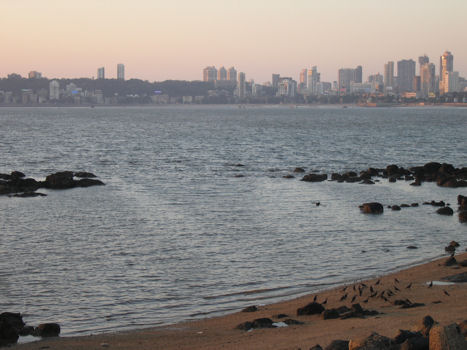
Chowpatti Beach at dusk.
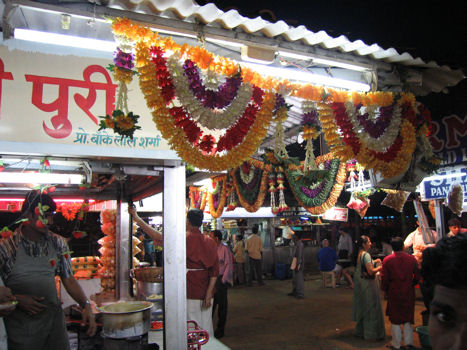
Food vendors at Chowpatti Beach
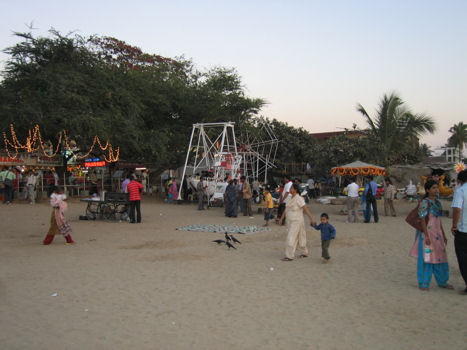
Carnival rides
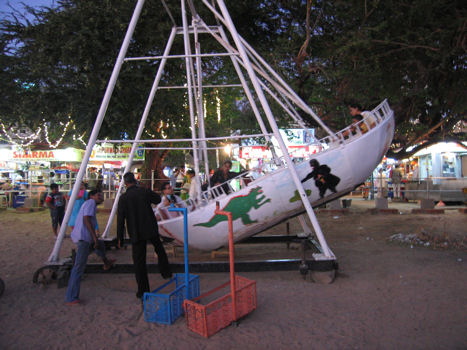
All of the carnival rides, like this pirate ship one, are operated by hand and have no safety equipment.
Along with Elephanta Island, Ted had also wanted to see the national park. Our driver said both couldn’t be done properly in a single day and I left the decision as to where we’d head on Sunday up to Ted. I didn’t have a plan for what to do in Mumbai and either option would be fine with me.
Technorati Tags: Mumbai, Gateway of India, Taj Mahal Hotel, Chowpatti Beach
You can follow any responses to this entry through the RSS 2.0 feed. You can leave a response, or trackback from your own site.

Leave a Reply